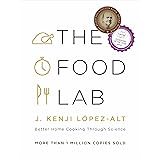The question of whether veganism is good for the environment is far more complex than often presented, encompassing debates around agricultural practices, nutritional science, and economic incentives. As highlighted in the discussion above between comedian Dave Chawner and farmer Jamie Blackett, simplified narratives frequently fail to capture the nuanced realities of our food systems.
1. Deconstructing the Environmental Impact of Dietary Choices
The perceived environmental benefits of veganism are often cited as a primary motivator for individuals transitioning to plant-based diets. It is commonly suggested that avoiding animal products significantly reduces one’s carbon footprint, water usage, and land occupation. However, this perspective often overlooks the diverse practices within both animal agriculture and plant-based food production.
Firstly, the carbon footprint of food production is a multifaceted calculation, influenced by factors such as land use change, enteric methane emissions from ruminants, fertilizer use, and transportation. While livestock, particularly cattle, are known sources of greenhouse gases like methane, regenerative farming models present a compelling counter-narrative.
1.1. The Role of Regenerative Agriculture in Climate Mitigation
As explained by Jamie Blackett, a dairy and arable farmer, the conversation surrounding meat and dairy often overlooks the principles of regenerative agriculture. These progressive farming techniques, largely championed by pioneers such as Allan Savory in the late 20th century, focus on rebuilding soil organic matter and restoring degraded soil biodiversity.
In regenerative systems, grazing animals are considered integral to ecological health. Their movement across pastures, known as “mob grazing,” mimics natural patterns of wild herds. For instance, on Jamie Blackett’s farm, groups of approximately 300 cattle are grazed on small 10-acre paddocks for short periods, typically 12 hours, before being moved and returning to the same paddock weeks later. This rotational system allows for significant pasture recovery and growth.
1.2. Soil Health and Carbon Sequestration
A fundamental benefit of well-managed grazing is its contribution to soil health. Healthy soils are vital for carbon sequestration, drawing carbon dioxide from the atmosphere and storing it as organic matter in the ground. Without the application of animal manures, as Jamie Blackett indicates for his arable land, annual topsoil loss could occur. The loss of topsoil means carbon is released back into the atmosphere as CO2 and nitrogen, contributing to greenhouse gas emissions.
Moreover, grazed land is observed to be significantly more water retentive. This characteristic is crucial, as water vapor itself is a potent greenhouse gas. Enhanced soil health and water retention thus play a dual role in mitigating climate impact and building resilience against extreme weather events.
2. Biodiversity and the Bovine Contribution
The role of cattle in maintaining and enhancing biodiversity is a critical aspect frequently overlooked in discussions about the environmental impact of animal agriculture. Biodiversity loss is a significant environmental concern, and the absence of grazing animals has been implicated in this decline in many regions.
2.1. Insects and Ecosystem Function
Cows contribute directly to insect life through their dung. It is asserted that a single cow, through its excrement, can facilitate the creation of a fifth of its own body weight in insects annually. These insects form the base of complex food webs, supporting bird populations and other wildlife.
In the British countryside, a substantial reduction in cattle numbers, alongside historical practices like excessive worming of livestock, has been linked to a decline in biodiversity. Worming agents can inhibit insect life in cow pats, diminishing their ecological value. Regenerative practices, which often reduce the reliance on such chemicals, aim to restore these vital ecosystem services.
2.2. Mimicking Natural Processes
The mob grazing system, which involves intense, short-duration grazing followed by long recovery periods, is designed to mimic the historical impact of large herbivores on grasslands. This process not only stimulates plant growth and root development but also ensures that nutrients are cycled effectively back into the soil through dung and urine. This integration of livestock helps to maintain complex, resilient ecosystems rather than simplifying them.
3. Nutritional Science and Human Health
Beyond environmental considerations, the nutritional aspects of vegan versus omnivorous diets are frequently debated. While plant-based diets can be healthy, the long-term nutritional adequacy of certain strict vegan approaches, particularly without careful planning and supplementation, remains a subject of scientific inquiry.
3.1. The Importance of Omega Fats
Human evolution occurred in an environment where meat consumption was common, and the human brain, which is approximately 60% animal fat, reflects this history. Essential omega fats, crucial for good mental health and cognitive function, are more readily and efficiently obtained from grass-fed beef and dairy products. These animal sources provide readily bioavailable forms of omega-3 fatty acids (EPA and DHA) that are less efficiently converted from plant-based precursors (ALA).
Comparatively, alternatives like almond milk or soy milk do not offer the same spectrum or bioavailability of these crucial fats. While some plant sources contain ALA, the conversion rate to EPA and DHA in the human body can be low, varying significantly between individuals.
3.2. Saturated Fats and Dietary Guidelines
The blanket condemnation of saturated fats has been challenged by recent nutritional science, which suggests a more nuanced understanding is required. Not all saturated fats are equal, and those found in grass-fed animal products often come packaged with other beneficial nutrients. These fats are essential for various bodily functions, including hormone production and cell membrane integrity.
4. The Commercial Landscape of Veganism
The rapid growth of the vegan food market has introduced significant economic considerations. Global food conglomerates have identified substantial profit margins in producing highly processed vegan alternatives. These products, often derived from vegetable oils, soy, or various plant proteins, are engineered to mimic meat or dairy items.
4.1. Corporate Influence and Profit Margins
There is an argument to be made that a powerful alliance has emerged between corporate capitalism and certain anti-capitalist environmental movements, as suggested by Jamie Blackett. The high profit margins associated with processed vegan foods, often reliant on large-scale monoculture crops (like soy for isolates or specific vegetable oils), create a significant commercial impetus for their promotion. This contrasts with the often lower margins and greater market volatility faced by traditional farmers.
4.2. Ultra-Processed Foods and Sustainability
While some plant-based foods are minimally processed and highly nutritious, many commercial vegan alternatives fall into the category of ultra-processed foods. The environmental footprint of these products must be scrutinized, considering the energy required for their manufacture, the source of their base ingredients (which can involve monocultures with their own environmental issues), and their packaging.
5. Navigating the Societal Discourse
The conversation around veganism is frequently charged with strong opinions, sometimes influenced by what Jamie Blackett terms “food wokery” or political correctness. This can lead to a conditioning of society to view traditional farming practices and the consumption of animal products as inherently detrimental, overlooking advancements and positive environmental contributions.
5.1. Simplifying Complexities
As Dave Chawner acknowledges, many individuals, particularly younger generations, are making dietary choices like switching to oat milk due to a desire for simple changes they perceive as beneficial for the environment, without necessarily delving into the full complexity of agricultural science or nutritional detail. While such changes are understandable, a deeper, more informed debate is crucial for genuinely sustainable and healthy outcomes.
5.2. Protected Characteristics and Open Debate
The legal recognition of ethical veganism as a protected characteristic in some regions adds another layer to the discourse. While this aims to prevent discrimination, concerns are sometimes raised regarding its potential impact on open, critical debate about the merits and drawbacks of veganism versus other food systems. However, open dialogue remains essential for learning and progress, as suggested by Dave Chawner, who emphasized the importance of continued discussion and the potential for changing perspectives.











